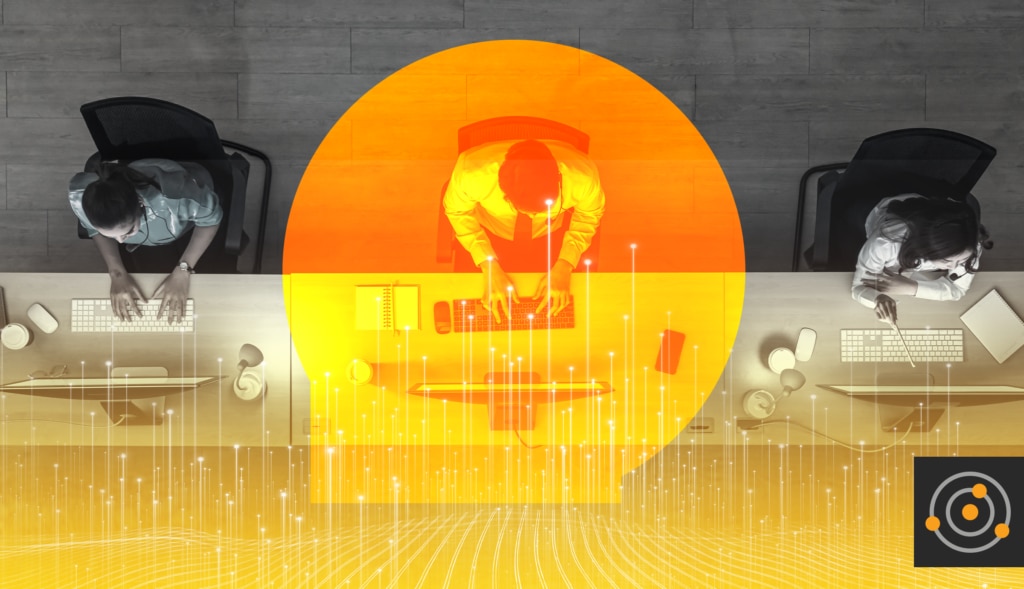Let’s say you’re shopping in a retail store. You have everything on your shopping list except for one item. You’ve browsed through each of the aisles (twice), and you still can’t find what you’re looking for. What do you do? You’ll most likely go to the service desk. There, an associate can direct you to the aisle and shelf of where the item is.
This is exactly how the IT service desk works for internal employees throughout an organization. The IT service desk is a software acting as the hub where solutions and services are provided to employees (end users). Employees can use the service desk to contact IT service providers, find answers to their technology questions, and gather solutions to their technology issues. For IT pros who want to get away from manually tracking IT assets, answering repetitive questions, and breaching service level agreements (SLAs), an IT service desk software is the ideal solution.
Features of an IT Service Desk Solution
The IT service desk is primarily responsible for managing incidents, responding to and resolving technology issues, fulfilling service requests, and managing cross-departmental workflows. Features you may find built into an IT service desk solution include:
- Employee service portal. Employees have visibility into the progress of support tickets they submit and the ability to find informational resources 24/7.
- Knowledge base. Built into the service portal, this resource gives employees access to self-service guides and articles for faster resolution.
- Service catalog. Automate the steps to redundant and frequent tasks through streamlined workflows, like employee onboarding and offboarding.
- Ticket routing/priority. Tickets submitted into an IT service desk solution can be automatically routed and prioritized to the appropriate team member.
- Reporting. Measure the performance of your service desk solution and team by creating automated reports based on customer satisfaction (CSAT) surveys, SLAs, resolution times, etc.
Benefits of Using an IT Service Desk Solution
A robust and mature IT service desk software helps your organization simplify and automate service requests from your employees, reduce IT support’s workload, and provide your employees with an exceptional service experience. End users and service technicians can see four key benefits almost immediately.
- Streamlined and transparent communication
With so many tools, communication platforms, and automated notifications used in an organization, employees need a central location to integrate all these channels for streamlined communication. When employees submit support tickets, an IT service desk solution gives them visibility into the progress of the request. Also, automated notifications help IT pros stay on top of
service level agreements (SLAs), with the ability to monitor long-term trends.
- Empowering employees to use self-service
IT’s value in the business is ever-growing. With this, their expertise may be needed in other areas of the business, meaning their time may be better spent on strategic projects versus repetitive tickets. The employee service portal built into the service desk solution can use smart suggestions to offer self-service options to employees. From steps to reset passwords to troubleshooting popular software applications, once the employee types a few keywords into the IT service desk search bar, articles from the knowledge base give them possible solutions to their problems. This shortens the technician’s incident queue and gives them back time to focus on greater business needs.
- Smart technology to maximize service desk efficiency
Automation capabilities coupled with artificial intelligence (AI) and machine learning ensure the IT service desk can quickly, efficiently, and effectively deliver services across the organization. From automated ticket routing to smart suggestions, when these technologies are built directly into the service desk, end users and technicians save time and get back to being productive faster.
- Improved employee/customer satisfaction (CSAT)
Having streamlined and transparent communication, self-service capabilities, and smart technology is a recipe for a great employee experience and improved CSAT. Like the satisfaction of finding everything you need in one place during a shopping trip, end users can enjoy the same experience for their business needs through the IT service desk.
Best Practices for the IT Service Desk
Keep ITIL Top of Mind
ITIL, previously known as the Information Technology Infrastructure Library, is the universal framework of best practices around the concept of IT providing services to support end users rather than the technology itself. The latest version of the framework, ITIL 4, includes seven
guiding principles IT professionals can use to mature their IT service desk processes. By following these principles, a solution can better equip your organization for incident, problem, change, and release management.
Encourage Portal Adoption
Encouraging users to access the portal can help you get more complete data in tickets, which helps with better organization, prioritization, management, and quicker, more efficient resolution of tickets. It can also connect users with self-service and smart suggestions to avoid ticket submission altogether.
Integrate IT Asset Management
Businesses have to keep track of several IT assets. By integrating IT asset management (ITAM) within your ITSM solution, IT staff can gain visibility into relevant asset data to understand the incident history of them and troubleshoot tickets quicker.
Include IT Service Desk Reporting
View the insights and data you need to make future decisions about your IT service desk, including incident throughput reports, CSAT scores, SLA breaches, and more. Take advantage of customizable
dashboards within the solution, so each technician or stakeholder has a clear view of the metrics driving their success. With automated reports, the IT service desk can send the right data to the right people when they need to see it.




